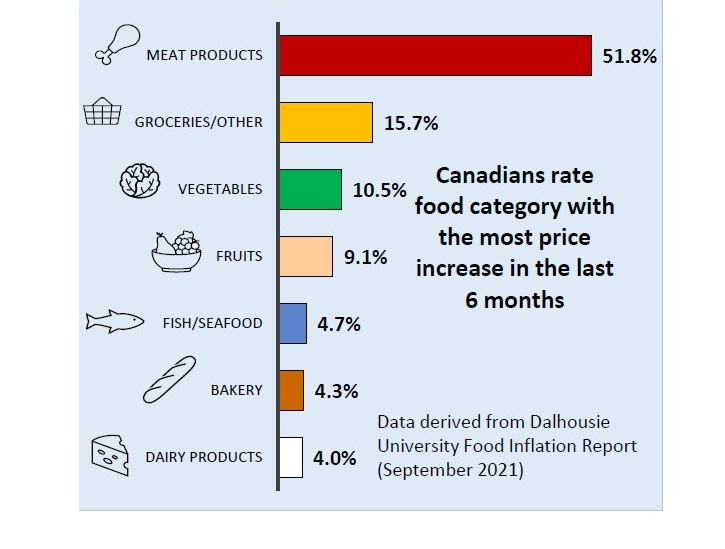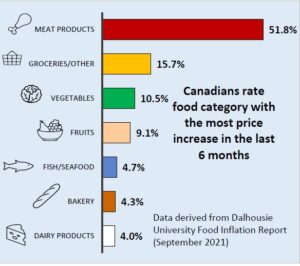Consumers forced to adapt as food prices increase
Your next trip to the supermarket may find you spending more than what you used to spend for your grocery needs. As the cost of living increases, nearly everything goes up in price, including the cost of food.
It may be more challenging for households to manage their food budget. For instance, Statistics Canada reported the cost of food grew 2.7% in August, up from the same time last year.
According to the Dalhousie University Food Inflation Report (September 2021), recent trends suggest food inflation in Canada is close to 5% over the past year. That translates to about $700 more for groceries this year compared to 2020. By the year 2022, that amount is likely to be even higher.
The extreme weather events this past growing season have not helped matters. The effects of climate change have created a chaotic situation in the agri-food industry and is becoming increasingly unpredictable. The Covid-19 pandemic has also had an impact.
Outbreaks of Covid-19 at food processing plants have prompted facility closures which impact the food supply chain and contribute to higher prices. Consumers have already experienced such an effect among many of the staples like, meat, dairy and vegetables.
In a survey conducted by the Dalhousie’s Agri-Food Analytics Lab (Fall 2021), in partnership with Caddle, a data insights platform, roughly 86% of Canadians surveyed have noticed food prices are higher than six months ago. It is a tough morsel to swallow, especially for carnivores.
Respondents said they noticed the increase in meat products the most in the last six months. In just half a year, the cost of meat has risen by about 10%. For example, the average cost of bacon in March was $7.29/500 g. By August, that same package now costs $8.24.
While meat was the most popular option (at 51.8%) selected by respondents, groceries came in second at 15.7%. Higher prices may compel us to cut back on meat purchases and opt for different items. But, the price for other groceries, including fruits and vegetables are also on the rise.
We can adjust our buying patterns to help cope with higher food prices. This often means switching from popular product brands to slightly less costly “private labels”, also know as store brands. Coupons are also making a comeback.
Now, nearly 40% of Canadians use this cost saving tactic more often than one year ago. The same rate applies to those who purchase discounted products closer to their “best before” dates.
For some items, the prices have remained the same. But on closer examination, product shrinkage, appears to be another tricky strategy the food industry has deployed to fool the unsuspecting consumer.
Otherwise known as “shrinkflation”, the industry sells products at a lesser quantity, but for the same price. Dr. Sylvain Charlebois, Director of the Agri-Food Analytics Lab explains, “from a food waste perspective, Canadians have historically bought too much food and have wasted a lot at home.”
Perhaps shrinkflation could be the key in helping Canadians reduce their food waste.




